#Some references to “Journey to Babel”
Explore tagged Tumblr posts
Text
Half Human
For @zerozerozio
"You're not gonna admit, that for the first time in your life, you committed a purely human, emotional act?"
"No, Sir." Kirk chuckled.
"Mr. Spock, you're a stubborn man."
"Yes, Sir."
That conversation happened one hour before and Kirk still wanted to hear Spock say that he wasn't 100 percent Vulcan ALL the time. So when Kirk finally got him alone, he picked up the conversation where they left off. "Come on, Spock."
"I believe I have already conveyed my thoughts on the matter."
"I know you're not as serious as you try to be."
"An incorrect observation, Captain."
"You said you acted on desperation."
"It was -" Kirk stopped listening, trying to find a way to show it.
"Don't make me prove it to you."
"'Prove it', Captain?" Kirk walked around to him and poked his belly. Then pinched his side.
"Jim!" Truth be told, Jim suspected that Spock wanted to let go and emote sometimes - he was half human after all. The only things stopping him were witnesses - which Jim had already taken care of - and the 'feeling' of vulcan guilt.
"Come on, Spock," he said, starting to scratch. "Lighten up!"
"Captain," he said, squirming out of Kirk's grip. A look of internalized conflict shone on his face, and Jim couldn't help but stop as he looked upon his friend with such compassion. Maybe this wasn't the best way to deal with it.
"You're not always 'logic,' Spock. And that's okay."
"Jim," he said, "not for a vulcan."
"You're not all vulcan."
"Sometimes, I wish I was." Spock had suffered all his life on his planet. He was ridiculed by the other vulcan boys for not being a full vulcan and his human half cried because of it. He remembered his mother trying to comfort him, but that was a human thing. He vowed there and then that he would be a vulcan for life, then he wouldn't be different. He would fit in and no one could say anything about him again, so he repressed his human half.
He had almost succeeded in becoming "fully" vulcan until he was surrounded by humans on the Enterprise, then the cycle continued. He was an outsider again, and it was obvious to everyone. Especially him. The side that he wanted so hard to hide wanted to come out. But even if he wanted it to, he didn't know how to let it out. He'd ignored it for so long that he almost forgot that it existed.
"Spock?" Jim brought him out of his train of thought. "Spock, I'm not judging you."
"Captain?"
" I don't care that you're half vulcan, half human. You're my first officer and friend, I want you to be comfortable. If you decide to let your human side out, we won't judge you."
"And McCoy?"
"He teases because he cares," Jim said with a smirk. "He doesn't really think any less of you. I think he'd like to see it too." Spock took a moment to think and Jim held back from saying that letting go was logical. It wasn't the time to make that kind of joke. "You don't have to feel ashamed. Do you look down on me? For my humanity?" Spock immediately straightened out, looking at him.
"Of course not, Captain."
"Then why look down on yourself?" Spock looked away again. "This isn't Vulcan," Jim said. There was a silence for a few seconds, broken when Spock took a breath.
"Will you help me?" Spock asked as he turned to face Jim.
"To be human? What do you want me to do?"
"Perhaps what you were doing earlier would be a good place to start." Jim smiled and started attacking his ribs.
And as he stood there, laughing, Spock realized that maybe being half human wouldn't be so bad after all.
14 notes
·
View notes
Text
I find the opinion that religion wouldn't exist in Star Trek kind of extreme. The notion seems to rely on the idea that, in the enlightened future Star Trek proposes, religion is too barbaric of a concept to survive.
This is, first of all, untrue within the text of the franchise. Pike is said to have had a religious upbringing in SNW, McCoy seems to have some connection to Christianity, Picard is agnostic, a lot of the Bajorans including Kira are religious, there is a Muslim background character in Lower Decks, and the crew seem pretty open to the idea of God existing in Star Trek V. Hell, there are tons and tons of biblical references in TOS. There's a whole episode called Journey to Babel.
But even aside from canon evidence, the idea that religion is something that humans must evolve past in order to reach their full potential is pretty uncharitable. People aren't all going to believe the same thing. The best thing we can hope for in the future is not that people will stop having these different beliefs, but that (so long as they do not condone poor treatment or devaluing of others), we will stop seeing certain religions as barbaric and we can simply believe them and express them without pain. A world where you could walk down the street and see an atheist, a Christian, a Hindu, and any other religion, all treating each other's beliefs with respect, not forcing their views on others. Just listening and understanding.
Quite frankly what we need is more representation of religions in Star Trek. Religions from indigenous peoples, African nations, Asian nations, etc. have seen little coverage or reference in Star Trek at all. And I think that's a shame. Star Trek has always been about growing as people and educating ourselves as times around us change. It doesn't matter if a religion has 100 followers or 100 million followers. People can always learn more about them, and I'd love seeing a future where they are all equally valued and get to be seen.
#The whole “would religion even exist” thing kinda feels like the disability in Star Trek argument#like it doesn't matter it's not about our literal future it's about growing more respectful and tolerant now let them be on TV#Star trek#trek#star trek: tng#enterprise#star trek enterprise#ent#star trek ent#st ent#st tos#star trek tos#tos#star trek tng#st tng#star trek the next generation#star trek voyager#st voyager#st deep space nine#st ds9#star trek ds9#ds9#deep space nine#deep space 9#st disco#star trek discovery#star trek: voyager#star trek strange new worlds#st snw#strange new worlds
306 notes
·
View notes
Text
USS Enterprise decks
Updated part 1 here
Updated part 2 here
This post got me thinking about the actual location inside the ship of several areas. Sure, there are many blueprints and reference books that have published complete and detailed layouts of the Enterprise. But ultimately, they're interpretations of different authors, filling in the blanks, and they often disagree with each other.
So this is a list of the bare minimum of facts. All the deck locations that can be gleaned from TOS episodes. Beyond that, it's up to anyone's imagination.
*Feel free to make additions or corrections to this post. This is only in reference to the original ship as seen in the series, not taking into account the refit ship from the movies, or alterations/retcons introduced in later series.
Saucer section (primary hull)
Most locations seen in the series belong to this section (as deduced from the curved corridors). The first version of the Writer's Guide tell us it has 20 decks. The later edition (season 2 onwards) reduced the decks to 11.
Deck 1
-Bridge: Obvious from a simple inspection of the ship's exterior. And also confirmed by the Writer's Guide to be in this deck.

Deck 2
-The Romulan Commander's "guest" quarters: Spock tells the turbolift to bring them to this deck, before leaving her in detention, in "The Enterprise Incident". I don't think we ever see other location said to be here (maybe she got the whole deck for herself; lucky!).
Deck 3
-Recreation room 6: Rand offers Charlie to come here, in "Charlie X".

-Recreation room 3: Spock says Bele is chasing Lokai in front of this place, in "Let That Be Your Last Battlefield".
-Crewmen's lounge: Same as above.
Deck 4
-Environmental control: Scotty says power's been shut down here, in "The Ultimate Computer".
-Living quarters: Kirk confirms this, in "The Ultimate Computer".
Deck 5
-Sickbay: Kirk brings Spock to this deck after ordering him to report to sickbay, in "Amok Time". He does the same with Elaan of Troyius. Strangely enough, most blueprints place sickbay in deck 7 instead.



-Kirk's quarters: Confirmed in "Journey to Babel", which also shows the cabin number (3F 121). The same number was first seen in "The Conscience of the King", but without specifying the deck.


-Recreation room 3: Spock says Bele is chasing Lokai in front of this place, in "Let That Be Your Last Battlefield". May be a script error, since a moment ago he had said this place was in deck 3.
-Transporter room: As Lokai seems to run directly here, we may assume it's also in deck 5 (though there are probably many more transporter rooms throughout the ship).

Deck 6
-Briefing room: Sargon calls McCoy from here, in "Return to Tomorrow". May be the same briefing room from other episodes.

-Guest rooms: Bele and Lokai are assigned quarters here, in "Let That Be Your Last Battlefield".
-Living quarters: Kirk confirms this, in "The Ultimate Computer".
Deck 8
-Auxiliary control: The android Norman hijacks the controls here, in "I, Mudd".

-Evaluation laboratory: Seen on a plaque, in "And the Children Shall Lead". Kirk and Spock arrived on this deck in search for Auxiliary control, so it should be in deck 8 as well.

Deck 12
-Janice Rand's quarters: In "The Enemy Within", after seeing Rand attacked by evil Kirk, a crewman reports they're in deck 12. The number of her cabin is also visible (3C 46).


-Kirk's quarters: In very early episodes ("Mudd's Women" and "The Enemy Within"), Kirk's quarters were here, instead of in deck 5. Since the number of saucer decks was reduced to 11 in season 2, the change makes sense.
Deck 14
-Transporter room: In "Dagger of the Mind", Dr. Van Gelder is locked in this deck, after arriving inside a cargo box.
-Personnel Director office: Seen on a plaque during Van Gelder's escape.

-Science Library: Same as above.

Unknown deck
These are some locations, likely from the saucer section, but with unspecified deck. There are plenty of such examples, so this isn't an exhaustive list.
-Impulse engines: The Writer's Guide confirms that the impulse engines are in the primary hull, in case of saucer separation. I think the impulse engines are only seen in "The Doomsday Machine", when Scotty is working aboard the identical Constellation. Though they look just as a reused set from Engineering.

-Spock's quarters: The cabin number is seen in "Amok Time" (3F 125). Possibly, it's in deck 5 near Kirk's quarters, considering the similar numbering.


-McCoy's quarters: Only seen in "The Man Trap" (I think), which also shows the number (3F 127). Again, it's probably near Kirk and Spock's cabins.


-Mudd's quarters: The number is barely legible, but looks like 3F 125, in "Mudd's Women". This happens to be the same as Spock's cabin. The likely explanation is that they didn't have a design for Spock's quarters so early in the series. The fun explanation is that they evicted Spock just to make room for Mudd.

-Uhura's quarters: Seen in "The Tholian Web", and adapted for Elaan in "Elaan of Troyius".


-Scotty's quarters: Seen in "By Any Other Name".

-Life Science Section - Botany Department: Seen in "The Man Trap".

-Gymnasium: Seen in "Charlie X".

-Officer's mess: Seen in "Space Seed".

-Botanical garden: Seen in "Is There in Truth No Beauty?".

-Briefing room: Different from the usual briefing room, it's seen in "Space Seed" when they decide Khan's fate.

-Biochemistry lab: Seen in "The Deadly Years".

Since I've reached the picture limit, the continuation with the Engineering hull sets will be in another post, here.
87 notes
·
View notes
Note
Ive noticed you posting about a star trek (?) show lately, would you recomend watching it? If yes, is there any sort of show that one should watch beforehand for prerequisite knowledge?
Oh yes absolutely! The specific trek show I've been watching is Deep Space Nine (often abbreviated DS9), and it's a great show, definitely recommend.
The various Star Trek shows are all like... loosely interconnected, and they do reference one another a fair bit, but (with the exception of one of the more recent shows) they don't necessarily follow directly on from one another, so you don't really need to watch them in any set order or anything. You can pick up any relevant info pretty easily from context.
That being said, if you want additional context for some of the stuff in DS9, there are some episodes of the original series (aka TOS) and the next generation (aka TNG) that you could watch beforehand (I'll make a list and stick it under a read more), but again, not strictly necessary.
If you are looking for Gay Shit, TOS is also really great for that in its own right (honestly most of Star Trek is), so I'll also provide some additional TOS episode recommendations, in case you wanna check that out too. If you want more episode recommendations just let me know. Most Star Trek series (except the newer ones) are pretty episodic, so you can sorta jump around however you want.
TOS episodes that provide additional context for DS9 (in order of how relevant they actually are to DS9):
S2e15 The Trouble With Tribbles
S1e22 Space Seed
S2e4 Mirror, Mirror
S1e26 Errand of Mercy
S1e14 Balance of Terror
TNG episodes that provide additional context for DS9 (not in order of relevance, TNG takes place in the same time period as DS9, so it's harder to sort by relevancy):
S3e26 The Best of Both Worlds Part I
S4e1 The Best of Both Worlds Part II
S4e12 The Wounded
S5e3 Ensign Ro
S6e10 The Chain of Command Part I
S6e11 The Chain of Command Part II
There are a lot more things that are only kinda relevant to ds9. Since TNG takes place in the same time period, a lot of things like alien species, technology, characters, etc., appear in both, so if you want to learn more about like, the borg, Q, Romulans, Klingons, etc., I can also make lists with additional context for those. (I might do that anyway in a reblog or something).
Recommended TOS Episodes (on top of the ones listed for ds9 context, which are also recommended i just don't wanna write them out twice) (also I'm just going in order for these):
S1e4 The Naked Time
S1e11 The Menagerie Part 1
S1e12 The Menagerie Part 2
S1e25 The Devil in the Dark
S1e28 The City on the Edge of Forever
S2e1 Amok Time
S2e10 Journey to Babel
There are definitely a bunch more good ones, these are just some of my favorites!
#star trek was how i got into fandom#i have been obsessed with it since i was like 12#So I am... very familiar with it by this point lol#If you want any more information#or recommendations#or anything#i would be happy to provide
7 notes
·
View notes
Text
I think the best line in it comes directly after the headline: “For a Samurai to be brave, he must have a bit of Black blood.” — Japanese Proverb. I had originally thought that this was a reference to Onis, and so my knee-jerk reaction was: Imagine appropriating a Japanese proverb about demon blood to make a point about African representation in ancient Japan. Then I looked into the origin of the “proverb”, which you might be able to tell from the scare quotes, wasn’t actually a proverb, it is attributed to a relatively obscure French racist, Georges Maget, by M. De Quatrefages in “Bulletins et mémoires” By Société d’anthropologie de Paris in the late 1800’s. Page 53, if you can read French. Maget is described as having written a letter in 1877 that described the Japanese as a mixture of Malay “Negritos” and the Ainu, and using that heritage to paint them as mixed-race sub humans. A copy of Japan’s Weekly Mail from the same year skewered him, very politely, for not having a fucking clue what he was talking about: “A good deal has been already said and written about the origin of the Japanese race Kaempffer makes them out to be Assyrians. and traces their route from the Tower of Babel with as much minuteness as if he had himself been an eyewitness of their journey, while other writers have in turn identified them with the Chinese, the North-American Indians, the ancient Peruvians, and the lost tribes of Israel. A plausibly written article from the pen of Dr. Maget, of the French man-of-war Cosmao, which has been lately reproduced in two of the Yokohama journals, endeavours to prove that the Japanese are chiefly of Malay origin, and as he refers somewhat contemptuously to the theory of “the peopling of the Nipon Archipelago by emigrations which with too great complacency are fancied to have started no from China, now from Korea, now from Manchuria,” he cannot complain if some of those who with more or less ‘complacency’ hold this view, at least in so far as Korea is concerned, should do their best. to combat his arguments.” So to tie that all up: In order to make the point that there should have been black people in a movie set in ancient Japan, Spivey quoted a 150 year old quote from a French Racist who fabricated the ancestry of Japanese people to make the point that Japanese people were sub-human by relation. Take a fucking bow.
—Humble Talent
#quote#comments section#see link for context#quotes within quote#william spivey#shogun 2024#georges maget
23 notes
·
View notes
Text
I try not to dig into Tolkien's earliest mythology and cosmology because honestly I find it completely insane. Like the story of the Silmarils I can get behind because that's garden-variety pettiness, but when you get back to "Melkor was too proud to understand that even the disharmonies he introduced into the music of the universe were, in fact, a part of Eru Iluvatar's grand design in that they and the Ainur's melodies formed to counter them made the whole all the more beautiful" my eyes just kinda roll out of my head. BUT something from checking up on making sure I was remembering Laurelin correctly snagged my interest, and I wound up reading about the awakening and "sundering" of the elves.
My loose summary:
Before the sun and moon were created, the abandoned Middle-Earth was in darkness because the Two Trees only illuminate the paradise of Valinor. The elves come into being in the east of Middle-Earth not long after the stars are placed in the sky, so the first light they perceive is starlight.
The elves "awaken" in three groups, which form tribes according to the order in which they awoke, literally "Firsts," "Seconds," and "Thirds" (in that the names of the three who then awoke the others became the roots for the words "one," "two," and "three). Obviously, the First elves are the best.
For reasons that aren't entirely clear to me beyond "they just think elves are neat," the Valar invite the elves to come live in Valinor. The 2/3-ish of them who accept undertaking that journey are then called Eldar, literally "star-folk."
Not all of the Eldar complete the journey—some of them instead settling at various points across Middle-Earth, all the way up to the edge of the sea. These all develop their own cultures, a shared language, and dialects. (This, of course, was the whole point.)
Like I said, the First elves are obviously the best elves: 100% of the First elves agree to go to Valinor and 100% of them complete the journey. They also never leave except that one time they all fight Melkor, unlike the Second elves who made it to Valinor and were eventually exiled. We don't talk about the Third elves.
ANYWAY, the decline of the elves from their First elves peak goes on for thousands of years but eventually they all leave and the world enters the Age of Men.
So in short we've got:
Primacy of the stars over other celestial bodies and also literally everything else
A slow splitting and dispersal of the elves from a single people into many
The consistent through-line of the First elves to Eldar and then Vanyar (Fair/High elves who remained in Valinor), superior to other elves
For all that elves and men are largely allies, there is still a thematic thread of them being antithetical to each other—the rise of men corresponds with the decline of the elves, even if it's not coming at their direct expense, etc.
Valinor also gets its own "these men set their eyes on power they weren't meant to have (in this case immortality) thanks to the manipulative whispers of a malevolent entity (Sauron), so their great kingdom was left in ruins and Valinor was sealed away from the lands of men except by a path only elves can traverse" story, but to be honest that's an incredibly common narrative that Tolkien was already cribbing from Babel or Atlantis or Eden or any of the other "we got too proud/greedy/corrupted and now everything sucks" stories. There's also enough other crap surrounding it that you can't really say "ha ha look it's Elarion" except in the "same hat theme!" way. But I wanted to mention it.
BUT YEAH idk man it's just kinda interesting to me that there's the same kind of Stars/First Elves/Great Ones thing going on, particularly the way that in TDP there are elves, but the entities referred to as a Star/Stars also still exist, or Aaravos wouldn't be wanting to get back at them. It's just being handled in a very different way, because uh... yeah, if anyone wrote "the first elves all went to paradise and never left it, even while the mortal world suffered under the yoke of evil, except when the time came to defeat literal satan" now, those guys would rightfully be assholes.
#tdp tolkien#i literally have not even read these books though#my parents are bigger tolkien nerds than i am... they once had a dog named elessar#and i would never denigrate my mother-in-law by calling her a tolkien NERD: she's a tolkien SCHOLAR#i just once had an embarrassing crush on a girl with a hardcore elf oc#kradogsmeta
14 notes
·
View notes
Text
Devil Survivor 1 makes a gimmick out of including several demons with "Bel" in their name, in reference to it being a title meaning "lord" associated with several major deities (x).
(In the same way that fellow DS MegaTen game Strange Journey ties together several Mother Goddesses with some form of "MA" in their name - name-based syncretism was going around the ATLUS offices in those days).
Several "Bel" demons are in a race to see who can kill all the others the fastest, granting the winner the title of "Lord of Bel", new ruler of the Demon Realm.
Current winner Belberith is shown to be ahead in the race by being a large ball of meat with a few recurring "Bel" named demons from the Mega Ten series that otherwise didn't make it into the game sticking out of it.
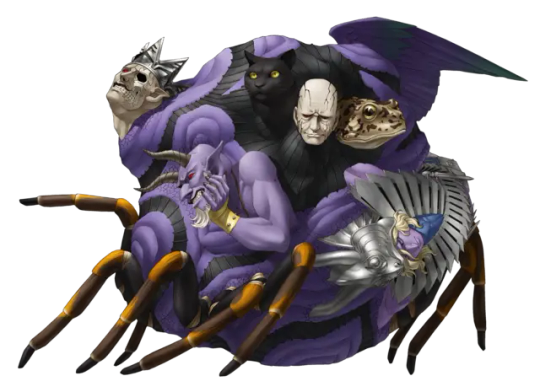
That purple guy with horns and a goatee? That's series regular Belphagor. The frog, cat, and guy with a crown is the series' depiction of Bael, and the silvery guy down the bottom is Baal.
Pretty neat, Devil Survivor.
It has to cheat to make a few of them work. "Beldur" and "Belzaboul" are not very standard spellings of Baldr and Beelzebub. But it also uses this fast and loose approach to put in some real oddballs, like Jezebel or the story of Cain and Abel.
Which reaches an apex of oddball picks when the true final boss on most routes isn't Belberith, but the Tower of Babel.
Like, the whole thing. The concept of the Tower of Babel, quite fittingly being the last thing in your way before you take the Throne.
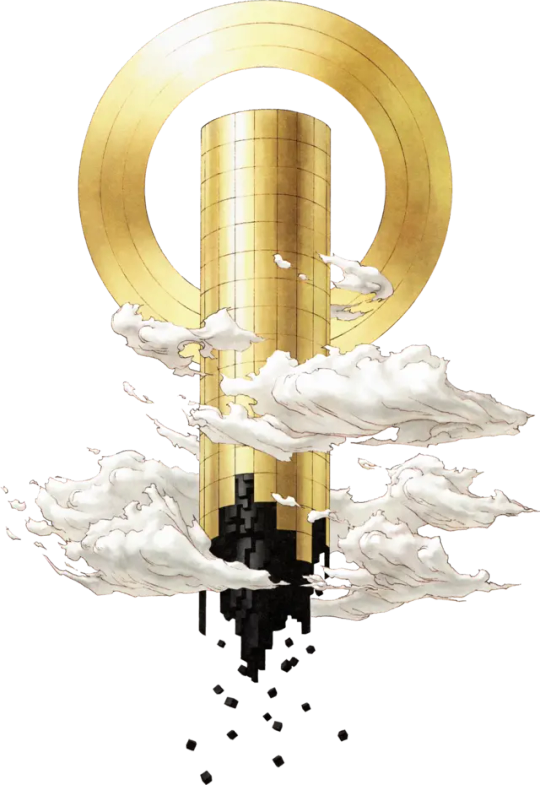
7 notes
·
View notes
Text
I don't know how to feel over all these strange fantasy names when it's supposed to be fantasy china (and Japan nearby). I would like annotations
it does directly copy and paste some stuff from China's history / Sun Tzu / strategist stuff
you can tell someone's important if they have a name from myth: eg Nezha, Jiang Ziya, Su Daji (femme fatale) There are some references to Journey to the West in some of the Cike/Bizarre Children but not direct borrowings- Baji (Zhu Bajie), Aratsha (Sha Wujing), Suni (Sun Wukong)
It's very readable (as YA tends to be). It's a more fast paced harry potter so far. I'm speeding through it a lot ngl.
Highlights: (wait there's no underline here still??)
- Rin beating Nezha (it's 2-1 so far but just Rin beating everyone up in the Tournament despite being excluded discriminatorily from class)
(And then them both working together like a well-oiled machine in the war!)
And oh, she turned out to be the last speerly! I think it works and also does introduce more tension over where to put her in terms of politics and all that, but I am also praying Altan doesn't die (I feel like he WILL) (and HE DID)
From what I remember of Babel (same author) -- well, there's the historical accuracy that doesn't deviate much, there's also the nostalgic romanticism of school (a safe and beautiful place with towers and pagodas, but also bittersweet with its bullies and racism) and having to work hard af (what a chinese thing tbh), wanting to excel There's the all-important teacher-student relationship and what knowledge does
Foreshadowing: where Runin was burning herself to study more for the Keju Exam, it ends up being foreshadowing for the god she'll call down -- the Phoenix. You watch her determined to go through anything to get stronger:
'How she didn’t need rest, only pain, pain to fuel the fire.' 'Who couldn't she kill?'
After she kills a creature wearing Altan's face. Well, spoiler: she does do genocide
Themes/Symbolism: knowledge, the danger of adhering to just one branch/extremity of thought (esp reflected in the elitism of Sinegard and the north and south; in the way the other Sinegard students treat Runin; in the way Kitay is convinced of his rationalism over Runin questioning if shamanism exists; even in the military where military arts and shamanism are separated and hidden (for the latter); and how Nikara separated itself from Speer (the analogue for smth like Ainu people in Japan.))
Of what is the purpose of knowledge, if it cannot be 'utilised' for in present context, war?
Is 'an eye for an eye' right? What would you do to win or to get revenge? That there are difficult choices to make in such horrors like war -- do horrifying things done to you and your people justify genocide? What if your god that was your only hope was also cruel to you? Between gods and humans, who is really using who?
Also subtly feminist. I mean, it really delivers on the promise of female rage, and there are a couple important female figures
Characters: of course Runin is easy to like and easy to root for! She's way more determined than me bcs she's that unhinged/unhealthy 'do-or-die' when it comes to academics and martial arts!
Everyone else for students is a bit, hm, unelaborated on so far which is fair
Rin has 2 foils: 1) Kitay, and 2) Nezha. And prob also Altan -- how he seems so perfect and later on how they seem alike -- but are ultimately different
Tearza in the past who refused to sacrifice the world for her people, so the god killed her in retribution. But Rin did do so in vengeance and is thus still alive.
Nezha funnily keeps getting 'off-screen death scenes' which means he's definitely not dead
Character relationships: interesting to see how Altan is a 'better' teacher to Rin as they understand each other better in needs to war, but also gets abusive towards her with the pressure and needing her to summon their god, as he is a soldier first.
Jiang was the 'wiser' teacher as a peaceful scholar but wasn't there, sealing himself away in stone
Descriptions: lightly sketched so you don't get drowned in it
Tone: easy, simple, direct, not very literary/purple prose, often short sentences
Use of language: Past tense. Purely in Rin's POV, with one exception in Tyr's/and then omniscient narrator (to show the betrayal of the empress). Lots of dialogue/some worldbuilding descriptions. (R F Kuang seems to begin/end/spin with dialogue a lot which makes it snappy?)
Figurative techniques sparse. Shows the extreme cruelty of the world (even before the war). Also does not hesitate to say fuck.
What works for it?
-want to see what happens to rin as it's very action-heavy and you're rooting for the underdog (fast-paced, inexorable marching to war)
8 notes
·
View notes
Text
Sky Theories: The Shattering Diamond
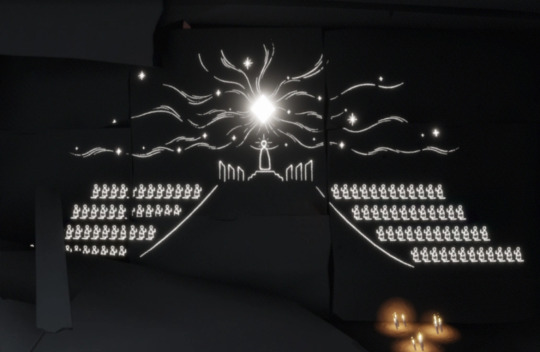
In this post I’ll be going over various theories on the Shattering Diamond, and evidences to support (or not support) then. This is probably going to get a bit long, so the rest will be below the cut. If you have any theories you’d like to add or flaws you’ve noticed in what I’ve written, please let me know!
I also ended up going into the aftermath of the explosion so tw for discussion of nuclear fallout
We can be pretty confident that the Shattering Diamond was a massive darkstone / artificial star. It seems to have consumed a lot of light and had some sort of purpose, so what was it supposed to be used for?
Theory One: it was meant to levitate Eden into the sky, like some sort of spaceship (sort of a modified Ark plan like we saw in concepts) - that being the reason part of Eden is now levitating. We know that darkstone can levitate things, see the platforms in the Vault of Knowledge.
This could have been a sort of Planet B project, as the ancestors realized their world was dying. It could have also been a plan to reach Megabird as sort of a religious journey (I remember one user comparing the structure of Eden’s city to the Tower of Babel). It could also have been a plan to OVERTHROW Megabird. But the massive ark (which seems to have been scrapped, in 7 Days of Sky they said (my emphasis on certain words) “in ONE ITERATION of Sky’s story, they built a massive ark to survive the apocalypse) would have been much more efficient at all of these things. Which brings us to the next theory.
Theory Two: it was meant to be an unlimited power supply, tapping into Eden’s light beacon to provide sustainable energy for the Sky Kingdom.
I’ve been seeing this theory a lot more lately, and I think it makes sense - with light getting scarcer in the Sky Kingdom and increasing protests against the use of light creatures for power, the King could have turned to Eden’s light beacon - a seemingly unlimited power source - for power. That could possibly explain why everyone is praying beneath it (though not entirely, I mean I’m not going around worshipping solar panels, so probably it’s the King they’re worshipping, with the Diamond seen as a symbol of his power).
This could have run into two problems - first of all, the light creatures needed that beacon for migration purposes. They might have been drawn to it - only to be absorbed - or attacked to keep their migrations safe. Second, that was a LOT of power.
I’m going to pull up the quotes from four of the six Shattering memories (if you’re hanging trouble reading them, you can find these on the Season of Shattering page of the Sky Wiki):
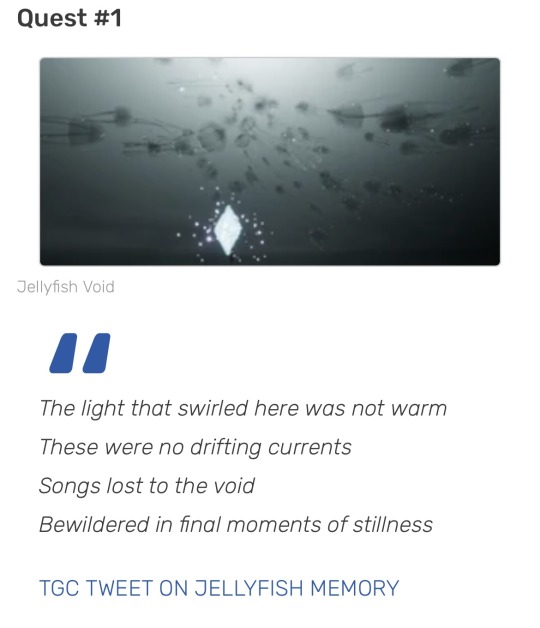
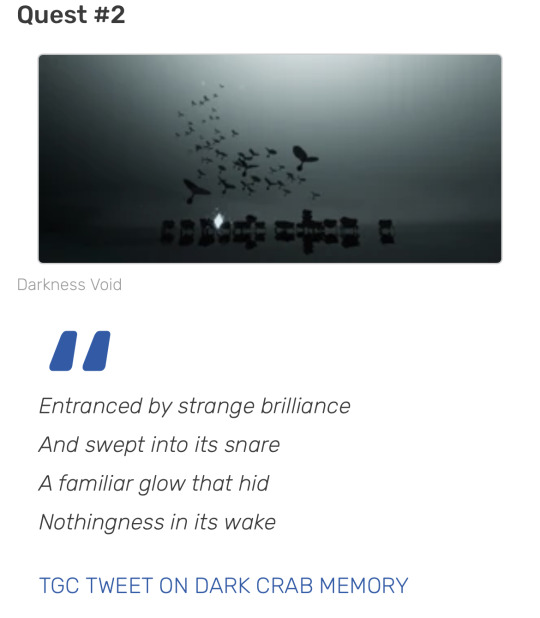
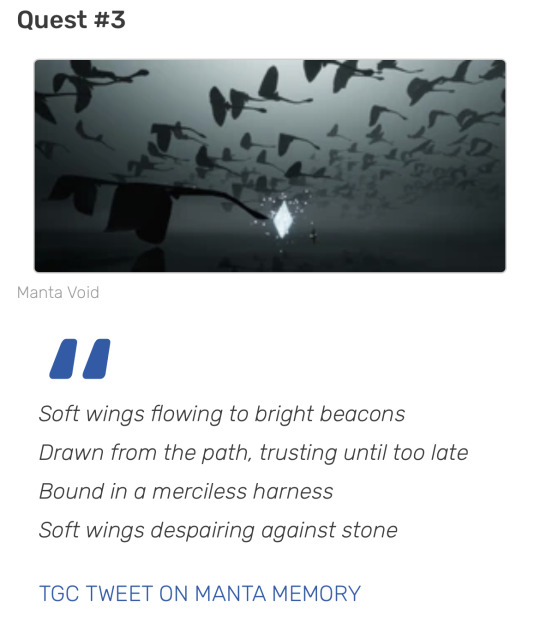
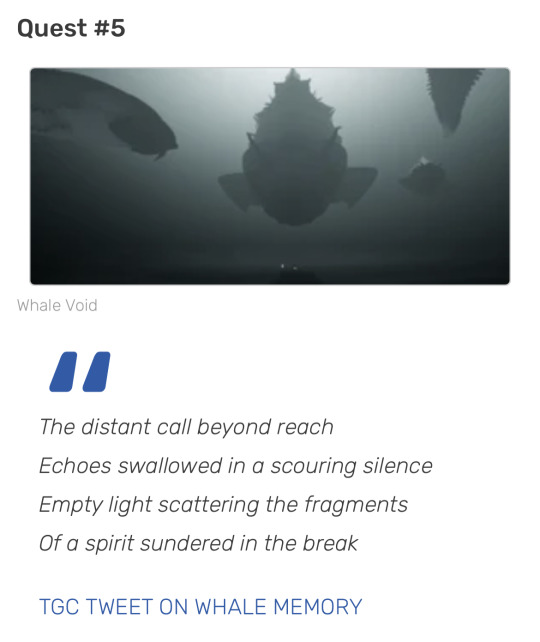
It’s possible that some of these could refer to light creatures being drawn to the Shattering Diamond, or just to artificial beacons set up to capture them. This could also point to the Shattering Diamond actually holding the souls of these light creatures, and that being how we can view them inside these “frozen memories”. So perhaps when the Shattering Diamond started to absorb the beacons power, for a while it glowed brighter than the beacon and the light creatures were instantly drawn to it - and as a result, absorbed by it. Since this meant their souls couldn’t rejoin Megabird, it further weakened the light in the universe, possibly causing the stars to start falling as we see in “The Seed” from the Aurora Concert.
It also had another consequence - the Shattering Diamond couldn’t hold that much light. Something was going wrong with it, and it was getting unstable. Let’s look at the final two Shattering memories:
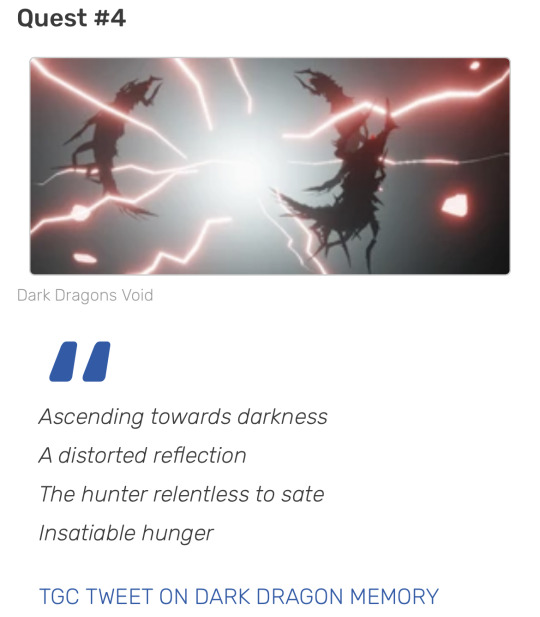
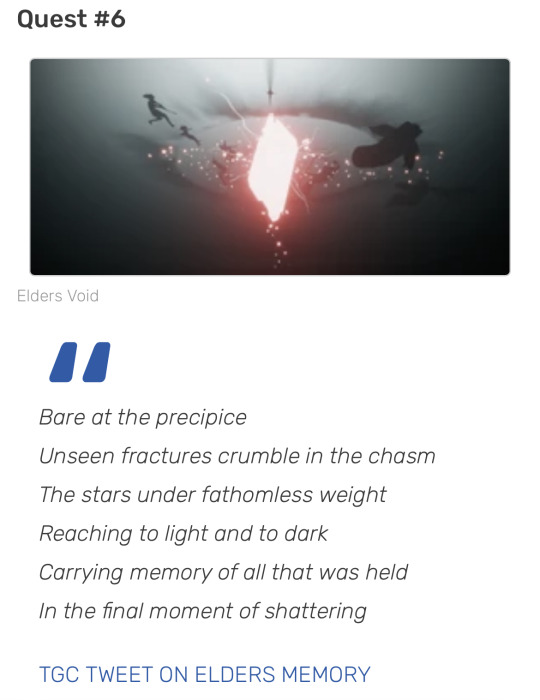
This points to a massive explosion of the Shattering Diamond - as it absorbed too much light, it, well, shattered. Somehow the Elders were all there when that happened - the concept timeline says they gathered to curse the King in Eden (trapping him forever), so maybe they were doing that? (Maybe the King is the dark star thing at the very top of the Diamond?)
In Light Awaits, there was a note on them trapping the resulting storm behind the Gate, so maybe they were trying to stabilize / contain it?
The explosion also created the just mentioned storm of darkness from all the light it had absorbed, warped, and released (I believe someone in TGC referred to the red as a warped flame and @/lelanida theorized that red presented darkness mixed with light). The storm corrupted light creatures caught in it, turning them into the krill (“a distorted reflection” of light creatures).
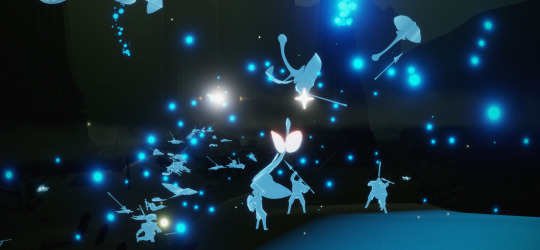
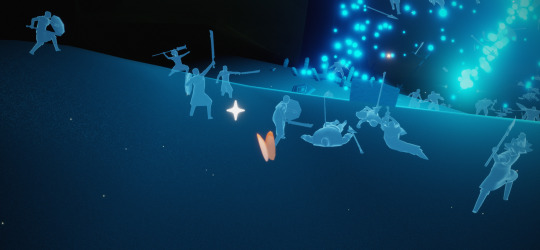
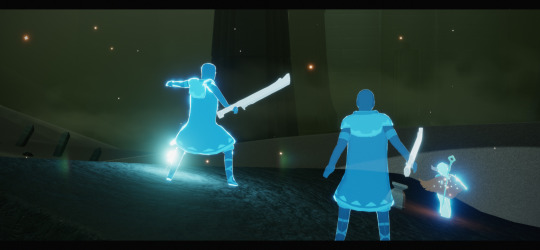

(Images from Aurora Concert and Seed of Hope quest)
We know from the Seed of Hope and Stealthy Survivor’s memories that ancestors encountered krill, so the blast didn’t kill everyone in Wasteland and beyond - it might have done so in Eden, however.
It might have been similar to a nuclear bomb, and krill creatures created by “radiation” poisoning - many people would have survived the initial blast, only to be crushed under falling buildings, die later of their burns, or die days or months later (maybe even years) of radiation / darkness poisoning.
Life would have very difficult for ancestors that did survive, especially in Wasteland - the water was polluted, krill searched for any light they could consume, and they had little light left to power the darkstone boats they could have used to escape. Darkness pollution would have sickened and killed many, especially children.
Vault accepted some refugees (as seen in Season of Remembrance), but probably shut their doors to keep the corruption at bay. This was probably the era of the Abyss spirits - concept art has Cackling Cannoneer wearing trophies that represent their battles with krill, and the spirit’s search for resources would fit in with this era.
Other areas faced a lot less of a threat from the explosion, but no longer having light to power their boats they would have lost contact with each other. The Elders had died in the Storm and they had no one to lead them. The animation trailer points to the falling of the stars as the reason Isle became a desert - meaning the people there would have starved (of course, they could have gotten food from the sea, but a lack of light probably also meant a lack of fish).
Prairie’s farms might have suffered, but they probably still had food for a while - we do see darkness growing on their bell towers and out of pots, so perhaps their farms became contaminated. Maybe the storm used to be a lot bigger, and affected all the realms a lot more.
Forest probably would have suffered due to the polluted rain and lack of food. Valley likely relied on imported food as well, so they would have starved.
The Lightseekers would have become very important, as they searched for the last traces of fallen light the ancestors could use for power.
Slowly, the last survivors died. The explosions around the Shattering Diamond continued to maintain the storm, as the beacon was still an infinite source of power. Eventually, it would start erupting again - triggering the start of Season of Shattering.
The shards we get are referred to as “pieces of frozen memory from the Eye of Eden”, again connecting all these memories to the theory that every one of them (not just the obvious ones) takes place in Eden.
It’s possible Eden started erupting again because of excess light brought to it by skykids, or due to the Megabird and therefore the beacon getting stronger. The fact they’re referred to as “eruptions” links Eden to volcanoes - other links include the way the fallen look like the bodies at Pompeii and the possibility that the storm contains volcanic lighting - but instead of being a regular volcano, it would be a volcano of darkness.
Anyway that’s all I have for now! Please share your thoughts / theories / things I might have missed, I’d love to hear them! (And please if you think I got something wrong don’t hesitate to tell me why and what your theory is, I want to make sure my understanding of the lore and the big lore blog(s) I have on the sky wiki is as accurate as possible)
42 notes
·
View notes
Text
People were posting resemblances between the different representations of the WHB demons in other media a while back and let me introduce to you the fucker (affectionate) that is GBF Belial. And I implore you to search up Parade's Lust and listen to the song in its entirety. It's a great song and encapsulates Belial perfectly (though I still greatly prefer Paradise Lost over it).
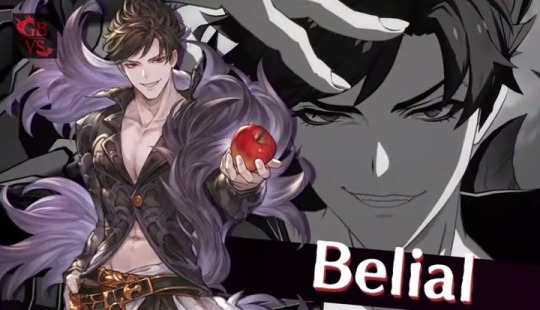

Dude's literally one of my faves in GBF despite him being an antagonist, it's just his raid battle is annoying. And this may have been a snippet from a convo back when his raid first dropped but our sentiments regarding said raid battle remains the same.
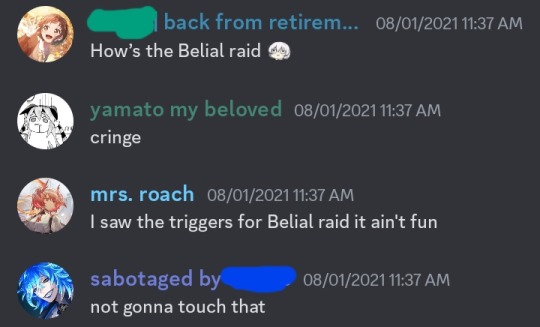
Also am I the only one who finds it so unbelievably weird that WHB's Beelzebub has had no overt references to his title as the Lord of the Flies (unless I'm missing something)? One of SMT's renditions of Bubs is a giant fly, and even GBF's has a skill called 'Black Flies' in his raid...

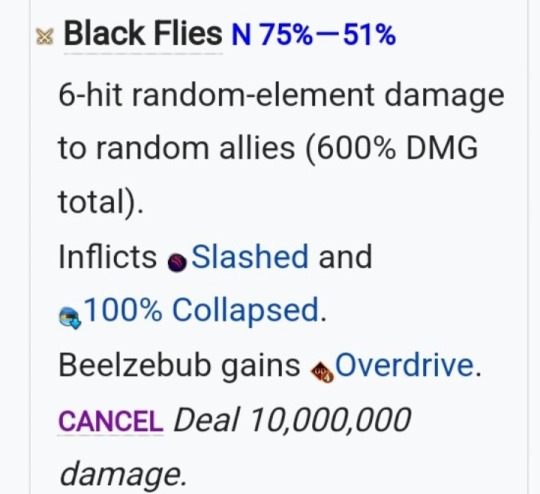
As an aside I love how the Belial trailer in GBVS has a clip of him getting his ass handed to him by Bubs. It really reflects their current relationship; they were forced allies back in What Makes the Sky Blue 2: Paradise Lost, with Belial still being wholly loyal to Lucilius, whose goals (return the world to nothing) are at ends with Beelzebub's goals (take over the entire world).

Also no mention of the entire Fallen race in SMT? They're all demons from the Ars Goetia, and the way some of these demons are so different is quite intriguing I'm ngl. Off the top of my head:
Naberius, or Nebiros, is a necromancer who has one of the most bullshit mechanics in Devil Survivor 2, where he'll continuously revive himself in the place of any living demon teams. In the SMT multiverse, he, with Belial, is responsible for turning Alice into a Fiend by infusing her with demonic magic, causing the human to be driven insane before dying and finally becoming the Fiend she is known for today. All because she wanted to have friends.
Belial is also in SMT! And is so fucking annoying to deal with in Devil Survivor, because he has an NPC stuck in a ring of fire that you have to heal continuously, because she takes damage every turn and her dying is a lose condition. He is a participant of the War of Bel, an ongoing war between the Bel demons to prove themselves worthy to Babel, making them the King of Bel and by extension the king of the demons. He fights the MC as he is the reincarnation of Abel and also part of the War after slaying Beldr. Another fun fact about Belial and Nebiros: in at least one SMT title, the fusion recipe for Alice is Nebiros and Belial, referencing their role in turning Alice into the Fiend we know today.
Eligos, or Eligor, is often an early to midgame demon who specializes in physical skills. He often takes the form of an armored humanoid riding a horse.
Dantalian, or Dantalion, is portrayed as a scholar with many heads, holding a large book. Oftentimes a magic-oriented demon.
Astaroth carried me in midgame SMT Devil Survivor as an early Tyrant demon aha. MP recovery is always nice lmao. He's depicted as a naked, blonde man riding a giant snake.
Morax, in Strange Journey, is the boss of Sector Antlia, the first dungeon of the game. He has a skill called Gehenna, which is a partywide chance to inflict Fear. He's easy as long as you can use ice magic - I fused Apsaras and had other Law demons like Archangel or Hamsa for co-op attacks. Depicted as a humanoid with a bull for a head, he believes humanity's true nature is one of eternal conflict and conquest, reflected in how the latter half of Antlia is a war-torn battlefield.
For the demon kings in SMT, given their associations with the Seven Deadly Sins, they do have their own depictions. The two that I'm most familiar with (and has the largest roles across multiple entries) are Satan and Beelzebub - the latter of which I briefly touched upon earlier. So let's talk Satan first!
Satan, in the SMT multiverse, is on the side of Law, the side associated with angels. As a result, he and Lucifer (the usual Chaos route representative) absolutely detest each other. This is particularly obvious in SMT 2, where he is YHVH's right-hand man and a foe in the Chaos and Neutral routes. Interesting to note is that he betrays YHVH upon realizing His machinations wiped out all life on Earth, which happens on the Law path.
Yeah, the SMT multiverse is kinda fucked up like that. There's a reason why I'm a Neutral route truther, apart from certain endings (like the new Strange Journey Redux endings for all routes).
As for Beelzebub, one of his most relevant roles is as a participant of the War of Bel in Devil Survivor, in which Belial is also a participant. He has a special attack that inflicts the Egg ailment - a ticking time bomb that goes off after one turn, inflicting heavy Almighty damage to the victim and spawning a team of maggot flies right beside the team with the victim. Bring your ailment clears!
As for the angels, apart from the standard SMT fare of Archangels where they're loyal to YHVH's will (although at least once Gabriel isn't as blindly loyal to YHVH as the rest, like in SMT 2), GBF has the Four Primarchs!

Gabriel is the Primarch of water. Kind-hearted and motherly, yet deceptively smart - she destroyed her own wings in What Makes the Sky Blue so her powers cannot be used by the event's antagonist, Sandalphon, to destroy the world.
Michael is the Primarch of fire. A tactician, fierce in battle, and a commander, her close association with combat meant that she had the most trouble adjusting to a peaceful life after the events of What Makes the Sky Blue 3: 000. She tried her hand in acting and is decent enough at it actually!
Raphael is the Primarch of wind. The most silent and thoughtful of the four Primarchs, he is known to be able to heal others using his winds. Also the easiest Primarch to be bullied imo, because Fire has a lot of busted DPS characters in exchange for very limited sustain options (I run Yukata Silva, Wilnas, and Michael - Wilnas has hit 10 mil CA damage with Silva's CA debuff).
Uriel, who was presumably killed by Gabriel in WHB, is the Primarch of earth. Which is ironic in GBF terms, because earth has elemental advantage over water. Anyways, he loves sparring and is the most boisterous among all the Primarchs!
As for other demon references in GBF:
Morax appears once again, this time as Magisa's familiar. Most of her playable forms incorporate her fighting with Morax, usually as a source of additional damage (counted as skill damage for the most part). Also is a dark composition of Summer Magisa, Fediel, and Lich is overkill, because that's my main dark comp...
Mammon is a Primal Beast. Same with Avaritia. They're both event antagonists - Mammon being the main antagonist of Detective Barawa and the Jewel Resort Incident (also depicted as a female in this game!) and Avaritia being the main antagonist of The Inner Light. Both stories are about greed, and The Inner Light in particular talks about how greed can destroy relationships. It's one of the events that made me cry, apart from the What Makes the Sky Blue trilogy, Together in Song, Lonesome Dragoness, Marionette Stars, and you., and Home Sweet Moon.
Leviathan is the Primal Beast who serves as the Auguste Archipelago's guardian. Mellow and gentle, but turned violent due to the Erste Empire's machinations, and the main crew managed to calm him down. Thankfully it never got past the point of going berserk, but the raid battle Leviathan Malice is a decent enough interpretation of what could've happened to him should the Erste Empire continue. Also memed to hell and back because of his sprite, as if he's laughing at your bad drops.
Satan is also a Primal Beast who, ironically, isn't the Satan-adjacent figure (that role goes to Avatar, who looks similar but is a different being entirely). Notably, Satan is part of Lyria's April Fools skin, with him riding on the Demonbream that she's stuck in (it makes sense I swear). Video here - Lyria is the blue-haired girl in white (WHOA-WHOA-YEAH!!!!).
((my wind otk is pitiful - i'm a water and dark main))
Anyways I'll add on to this if I find more, but I just wanna say this sort of shit tickles my GBF and SMT brain a lot. So...
#what in hell is bad#rimei rambles#whb#the brainworms are real#i play too many games#yes i'm an smt nerd#and i used to play a lot of gbf#now i'm seasonal
15 notes
·
View notes
Text
Buckle up, bitches, i've got an extensive list of personal TOS McKirk/McSpirk headcanons to share (also includes adjectives for all three dicks). long post but worth it

Bones and Jim are friendly exes who still care deeply for each other.
Bones was responsible for Jim's bisexual awakening and the first man Jim slept with. Bones had quite a bit more experience at the time, but Jim is the first man he ever truly loved.

Jim is responsible for the nickname "Bones" and its origin is sexual in nature: Bones has great stamina and a quick recoil rate, so the nickname comes from some variation on the phrase "Bones All Night Long". They both lie about the real origin to people that ask, but their explanations contradict. Bones says it comes from the word "sawbones," a term coined in the 1800s that refers to gruesome battlefield amputations, and Jim says that it's because Bones was on an orthopedic surgery rotation around the time they met.
They are really, really good together sexually and still occasionally fuck (really, really well) just for fun.
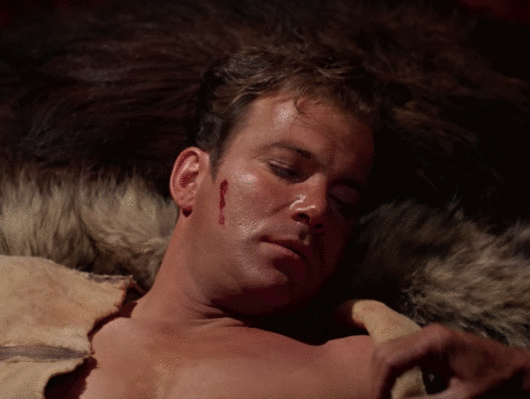
They know that they don't work as an actual couple, and they don't want to get back together, but every now and then one of them starts to wonder if they should try again and brings it up. They like to joke that these feelings are only allowed as long as they don't both ever feel this way at the same time.
They also remain very intimate in lots of nonsexual ways. They tell each other everything. They have a keycode to each others quarters and keep clothes and a toothbrush there. (This explains the way they are getting dressed together in their formals at the start of Journey to Babel, and the way Bones sometimes enters Jim's room without knocking, like in Obsession.)

They like the same brand of condoms and share a large box of them that they both grab from as needed (for sleeping with other people). They have helped each other through bad breakups with others. They are each other's emergency contact.
Thanks to both chiropractic knowledge and intimate knowledge of Jim's body, only Bones knows how to pop Jim's back in a very specific way when he needs it. (if we skip ahead to "Dig it in there, Mr. Sp--": Jim was trying to explain to Spock how Bones does it when he realized it was actually a yeoman and got embarrassed.)

Bones had a health scare involving cancerous spots that he had to have removed from his back, and Jim helped him recover from the treatment and helps with the required ongoing vigilance by helping to check the moles on Bones' body in places he can't see.
People know they were once involved, and sometimes still assume they are a couple, but they are quick to correct them.

They have made one of those "if neither of us finds someone by this age" pacts, and Bones is nearing the age in question and has started to get used to (and even like) the idea of them getting back together again for real... when Spock enters the picture.
Much of Bones' vitriol towards Spock early in the series is motivated by jealousy that Jim's attentions are elsewhere, and also plain annoyance at what a pedantic jerk Spock can be sometimes. Jim gushes about Spock to Bones and Bones has lots of feelings about it. Then Bones eventually realizes that he is also attracted to Spock and that makes him even angrier.

One evening, an upset Bones drinks too much and forces a conversation with Spock. He tearfully gives him a version of "if you hurt the one I love I'll kill you and since I'm your doctor they'll never know it was me" but also "I love him so much that I'm willing to let him go so that you two can be happy together." Spock listens intently as Bones rambles on and on and eventually starts to offer Spock some very Jim-specific sex tips: "You don't understand; I'm really good at fucking him, like really, really good. Here's what you can learn about Jim from me because he deserves to get it that good even if it's not from me." Spock finally cuts him off and tells him, "Dr. McCoy, if I may. It is illogical to assume that our two loves for the Captain are mutually exclusive. There is no reason for you to let go of either your meaningful, albeit excessively emotional, connection with him, nor your indispensable sexual knowledge of him. More love is always a good thing. Much like the way you are the only one who can pop his back just right, there are many things that only you can give him. I propose that your existing arrangement with the Captain continue alongside, and in addition to, my relationship with him. Moreover, I find you quite attractive and would not mind some advanced sexual experimentation involving you. I also believe the Captain would enjoy that immensely. Would you like to join us on shore leave this weekend for some experimentation involving all three of us at the same time?"
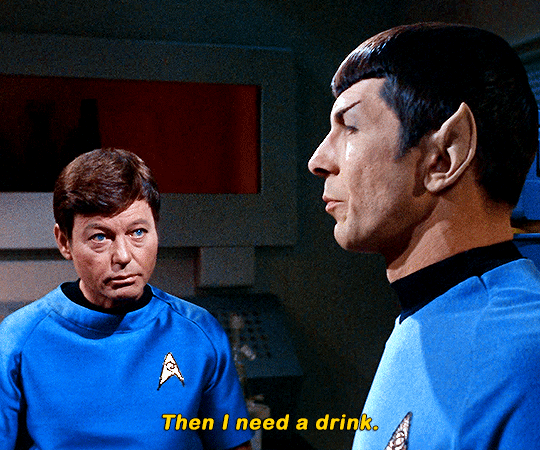
Bones is a little taken aback. He feels quite ambivalent toward Spock. On the one hand, he has always been attracted to Spock physically (although he barely even admits it to himself) and also wouldn't mind... what did he call it? experimentation? with him, but he doesn't particularly like him or trust him (yet). He has also always been curious about a three-way in general, but he's a little weirded out that it's Jim and Jim's boyfriend. However, the thing that convinces him is something that Jim said to him one time when he was gushing about Spock. Some weird Vulcan word, something about how Jim believed himself and Spock to be two halves of a whole. Looking at Spock as an extension of Jim instead of a separate obnoxious person helps to convince Bones that it maybe could work.
The two of them approach Jim with this idea, and while Jim's brain is also maybe a little wary his heart says *heart eyes* YES *heart eyes* and his dick says ohfuckyes ithinkijustcamealittlejustthinkingaboutit howdidigetsolucky
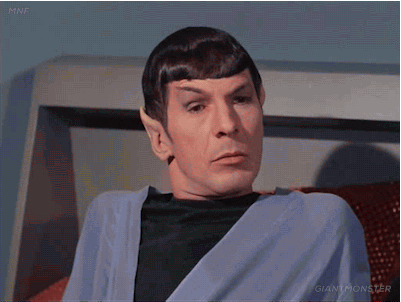
The three go on shore leave together and it turns out all three of them are really, really good together. Jim is so overflowingly happy about getting to be in the middle of the love sandwich that he might have cried a little. And Bones and Spock turn out to be also really sexually compatible and really, really into each other.
Over time, Bones and Spock develop deep feelings for each other in addition to their mutual feelings for Jim. They continue to spar and butt heads, but now it's a form of foreplay. Whenever they get to feeling particularly annoyed with each other they know it means they need to fuck.
Jim finds it incredibly hot that the two of them are also so good together, and he loves to watch them. When he is alone and touching himself, two of his favorite fantasies are to relive the sandwich or picture the two of them fucking each other, which are both experiences he also gets to live often in real life.
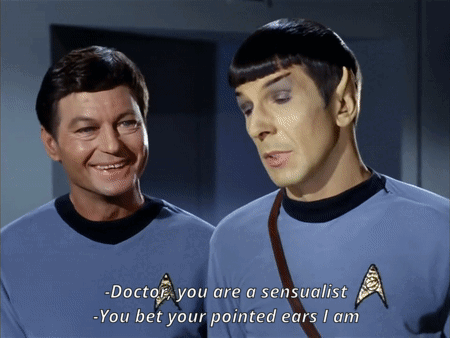
Now this one particular headcanon is lifted wholesale from "Between Friends," the fourth installment in a series of vintage 1976 K/S fanfiction by GayleF called the "Cosmic Fuck" series. (Spirk fans, read the whole series. You won't regret it.) This fourth installment is believed to be the first published McSpirk fanfic and it contains deliciously graphic descriptions of all three dicks involved. Jim has a nice thick dick, Bones has a nice long dick (and he has been told that "the nice mushroom head on his cock was better than a French tickler"), and Spock's dick is described as "Gorgeous thing. Belonged on a temple altar." Headcanon 100% accepted, 10/10 no notes.
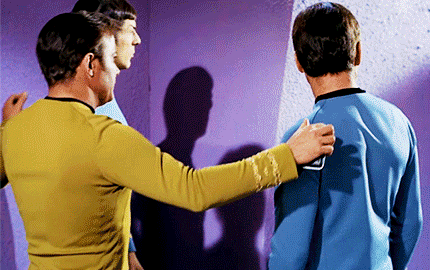
I also love the post from @idnonexistent that says that Kirk and Spock share a soul, Spock and Bones share a mind, and Kirk and Bones share a heart. Another headcanon 100% accepted.
And they lived happily ever after as McSpirk.
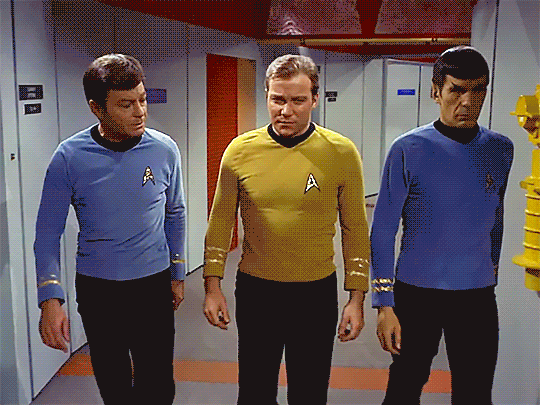
#i'm always saying there's not enough mckirk out there#so let's fix that#star trek tos#mcspirk#mckirk#spones#spirk#k/s#kirk/spock#the premise#james t kirk#tos spirk#spock#bones mccoy#sim speaks#my posts
77 notes
·
View notes
Text
1 Chronicles 23: 10-11. "The Gate to Fundamental Truth."

10 And the sons of Shimei:
Jahath, Ziza,[a] Jeush and Beriah.
Jahath=Incense
חתת
The verb חתת (hatat) means to deplete of strength, courage, willpower or any essential support, which results in a collapse of sorts. Nouns חת (hat), חתת (hatat), חתה (hitta), חתחת (hathat) and חתית (hittit) describe the various nuances of debilitating or paralyzing terror or fear. The identical adjective חת (hat) means shattered or dismayed. Noun מחתה (mehitta) means destruction, ruin or terror.
The verb חתה (hata) means to seize or snatch up, usually of fire or coals. Noun מחתה (mahta), meaning fire pan or censer.
Ziza=The Gate to Fundamental Truth
זוז
Judging from its extant derivatives, unused verb זוז (zwz) appears to have described a cyclic or tidal "ebb and flow" motion. Noun זיז (ziz) denotes roving things such as certain animals, which obviously move about their territory in circles, depending on the season. Noun מזוזה (mezuza) denotes a "place or agent" of the parental verb's cyclic motion, and refers to a door- or gate-post (and of course humans' frequent return to some fundamental truth).
Jeush="As in the Days of Noah."
עוש
Verb עוש ('ush) means to help. It may also be spelled עות ('ut).
Beriah=
רעע
Most broadly, the root רעע (ra'a') describes compartmentalization: to break some continuum apart into separated elements. Human minds are designed to be nodes of a much greater network of exchange, and must continuously interact to maintain a liquidity of wisdom — hence the noun רע (rea'), meaning friend or companion (and hence too the story of the Tower of Babel).
All wealth requires liquidity and that requires units of economy to go around. This explains why "evil" — רע, ra', evil — is not the opposite of "good" but instrumental to it: hence the perfect Tree of Knowledge of Good and Evil in the heart of perfect Paradise. Despite popular misconceptions, in the Bible, all רע (rea') comes from God (Isaiah 45:7) and has a specific and wonderful function in any naturally evolving system.
Verb רעה (ra'a I) means o pasture or feed and the participle רעה (ra'a) means shepherd. Nouns רעי (re'i) and מרעה (mir'eh) mean pasture. Noun מרעית (mar'it) means pasturage.
Verb רעה (ra'a II) means to associate with. Nouns רע (rea'), רעה (re'eh) and מרע (merea') mean friend, associate or "neighbor". Nouns רעיה (ra'ya), רעה (re'a) and רעות (re'ut) describe a female attendant, mate or friend.
There may or not be an unused verb רעה (ra'a III) or else the following belong to the previous: noun רע (rea'), aim or purpose; nouns רעות (re'ut) and רעיון (ra'yon), longing or striving.
These were the sons of Shimei = Fame="How one speaks and is also heard."—four in all.
11 Jahath was the first and Ziza the second, but Jeush and Beriah did not have many sons; so they were counted as one family with one assignment.
First is Ladan, "The Crown in Parliament" or an absolutists commitment to fairness, justice, progress, the future itself which depends on clemency and prosperity at the same time.
Now comes this idea of Shimei, which is the combined intelligentsia of a civilized culture. It begins and ends with the [successful and profitable] ways one practice apprehension of God.
The method closely follows the journey to Haran, and is associated with the Four Directions.
Jahath, NORTH, what is hidden by God. God Himself is hidden, but He is there. We see this in the way the incense hides the perfume in the smoke. Even still, the fire and the atmosphere inherent in the incense are not known. This is why scripture is often called incense. Scripture hints at the existence of the Sacrosanct, but only that which abides with God within the Unseen is able to provide Sacrosanctuary. It is the duty of the Crown-In-Parliament to provide constant allusion to the Sacrosanct.
2. Ziza, EAST, what is revealed by God. The Gate to Fundmantal Truth is the intellect which merges the experiences of the senses and the organ systems and organizes them. Intellect is unborn in man, we need others to develop and feed it.
3. Jeush, SOUTH, what is realized by man. The Tanakh says all intelligent persons abide by the Laws of Noah, AKA Universal Morality.
The 7 Noahide Laws are rules that all of us must keep, regardless of who we are or from where we come. Without these seven things, it would be impossible for humanity to live together in harmony.
Do not profane G‑d’s Oneness in any way. Acknowledge that there is a single G‑d who cares about what we are doing and desires that we take care of His world.
Do not curse your Creator. No matter how angry you may be, do not take it out verbally against your Creator.
Do not murder. The value of human life cannot be measured. To destroy a single human life is to destroy the entire world—because, for that person, the world has ceased to exist. It follows that by sustaining a single human life, you are sustaining an entire universe.
Do not eat a limb of a still-living animal. Respect the life of all G‑d’s creatures. As intelligent beings, we have a duty not to cause undue pain to other creatures.
Do not steal. Whatever benefits you receive in this world, make sure that none of them are at the unfair expense of someone else.
Harness and channel the human libido. Incest, adultery, rape and homosexual relations are forbidden. The family unit is the foundation of human society. Sexuality is the fountain of life and so nothing is more holy than the sexual act. So, too, when abused, nothing can be more debasing and destructive to the human being.
Establish courts of law and ensure justice in our world. With every small act of justice, we are restoring harmony to our world, synchronizing it with a supernal order. That is why we must keep the laws established by our government for the country’s stability and harmony.
These laws were communicated by G‑d to Adam and Noah, ancestors of all human beings. That is what makes these rules universal, for all times, places and people:
Laws made by humans may change according to circumstance. But laws made by the Creator of all souls over all of time remain the same for all people at all times.
4. Beriah, WEST, what enlightens man= pasturage of one's neighbor. Which brings us back to what is Sacrosanct about man, if there is anything, it is the offer of refuge, the same we share in every inch of blacktop, copper wire in the ground and overhead, every brick, drop of clean water, every isntance a first responder who has spent 12 years of his life training saves a life.
All of these non-violent things give us good lives, lots of food, boys, booze, every kind of work and entertainment we have conceived of.
These are the things we want, they embody the existence of a fundamental truth humanity always returns to after it forgets.
To yearn for the experience of this truth in every quarter as God instructed us to do and then obey its tenets is called Shimei.
Human beings don't want religious people telling them what to do, politicians to help them do it, to be penalized because they long to be happy, or held back by bombs, crappy, lazy, vapid policy making, famines, droughts, plagues or bombs falling on them.
Universal recognition of this is the revolution God has always sought to incite through the writing in the Tanakh.
0 notes
Text
so uh, I am brand-new to Star Trek (as in not even finished with the third TOS season), so I don't have much background here, but I have thoughts? I am also not a biologist, mind you, just researching online and using what I remember from gen-ed classes. I may have lost myself down the rabbit hole for… er. a while. a long while.
For the record, this is me trying to apply Earth biology and logic, which I know is not actually applicable to literal aliens or fiction. The joy of writing is being able to say "fuck it, this is fiction, I make the rules now."
But. Science is fun. So here's me trying to Science it.
First: points of consideration! Vulcan is a desert planet. It's close to its star with a thinner atmosphere, and notably hotter than Earth. A thinner atmosphere makes it harder for a planet to regulate temperature and may block less solar radiation. We also know, thanks to Amok Time, that humans can't breathe as easily there, probably due to lower oxygen. So, this means: 1) The temperature difference between day and night is probably more significant than Earth's (because desert and thinner atmosphere). 2) Less oxygen is available.
(For the record, I don't think humanoids would develop on a purely desert planet, but my tangent on this got so long that I'm cutting it. Also sci-fi hand-wavey suspension of disbelief.)
Second: what we already know! …or what I know from the first and second seasons of TOS, what y'all pointed out in the thread, and what I looked up via wikis. The links on episode titles go to transcripts.
Copper blood: Vulcan hemoglobin (the protein used to carry oxygen around) is copper-based, not iron-based (TOS "Obsession"), hence the green blood.
Blood pressure and heartrate: They have significantly lower blood pressure than humans, but a much, much higher heartrate—assuming Sarek's stats during surgery in "Journey to Babel" are applicable, anyway. (Again, I am very new to Star Trek, so that definitely could contradict something newer.)
Cool blood (and low metabolism): Their blood is cooler than humans', possibly implying a lower body temperature. McCoy also comments on Spock's nigh-unmeasurably low metabolism (TOS "The Paradise Syndrome").
Temperature tolerance: They have a considerably wider range of temperature tolerance than humans. (This is implied by their planet's natural temperature range, and by the fact that Spock is usually okay at human temperatures, but, when he can't regulate his temperature so well, apparently finds 125 degrees (presumably Fahrenheit) "tolerable" in "The Deadly Years").
(…also. According to Memory Alpha, a fan-made medical reference text provides some stats. But it's not considered canon, doesn't reference Earth science, and I spent way too long researching this to end it at that.)
SO. Let's go through those "what we already know" points.
Green blood and copper-based hemoglobin: This is a real thing! Some animals DO use copper instead of iron to carry oxygen around! Except they're invertebrates (ex. octopuses, some spiders), the blood is blue, it's not called hemoglobin, it's in an open circulatory system, and it's not like vertebrate blood. It's called hemocyanin, and it free-floats in the invertebrate equivalent to blood (hemolymph) rather than being shipped around by red blood cells.
(For the record, there are other types of blood that are green, but they don't use copper. But blood color varies for other reasons too. I'm handwaving this one.)
Vulcans clearly have closed circulatory systems (closed = blood pumps through vessels, open = sloshes around organs freeform), so they'd need cells to carry oxygen around, so they probably don't use hemolymph.
If you're wondering "but we evolved from invertebrates, so why don't we use copper?" like I was, it's because COPPER SUCKS AT CARRYING OXYGEN. At least in comparison to iron. (Unless you're in deep sea environments, which the desert is not.) So presumably, Earth vertebrates started using iron somewhere along the line. Vulcans did not.
My conclusion: Vulcan biology uses copper in a way that's analogous to how humans use iron, but somehow finds a way to make it efficient enough to match said iron's oxygen capcity. Also, considering that Vulcan seems to have less oxygen in its atmosphere, I'd guess their systems use oxygen more efficiently overall, or they just don't require as much. So maybe it doesn't even need to be quite as efficient. (Coming back later: to my gratification, Memory Alpha also notes the oxygen issue, although in this case it notes that Vulcans have more efficient respiratory systems to get the oxygen needed.)
Lower blood pressure, higher heart rate: I think beastlyanachronism is right about this one. However, circulatory systems are extremely complex and I know nothing about them (I'm a communications person, not a doctor, Jim!), so I'm not really the person to ask. I did some reading to try to educate myself for the sake of this question, though. Anyway: lower blood pressure implies that the Vulcan heart doesn't beat very hard, but it seems to beat faster to make up for the lower pressure. This clicks with the idea that Vulcans use oxygen more efficiently/need less oxygen than humans, since the heart doesn't have to do so much work.
Finally! Body temperature. I'm combining "cold blood" and "wide temperature tolerance range." And I did Much Research. I'm going to explain some biology stuff that some folks probably already know, but for those like me who don't remember the nitpick bits of biology class, I figure this might be useful.
Generally speaking, there are two types of animal when it comes to regulating body temperature: ectothermic (i.e., primarily relies on environmental heat sources and produces little internal heat; e.g. reptiles, amphibians, fish), and endothermic (i.e., generates internal heat and maintains a more-or-less constant body temperature; e.g. mammals and birds). It's way more nuanced than that, but we're talking broad strokes. (More reading: 1, 2, 3)
(Side note, the ducks kedreeva mentioned are maybe using regional heterothermy.)
Colloquially, you would hear these referred to as "cold-blooded" and "warm-blooded" respectively, but science doesn't use those terms anymore because it's not how they technically work; e.g., lots of active ectotherms keep their body temperature in mammal-range. There are others that conform to their surrounding environments, like fish, but as far as I can tell, they need a fairly consistent environmental temperature range. Endotherms, meanwhile, rely on their internal heat source: the excess heat energy from their internal functions.
Heat's important to animals for… well, multiple reasons, but a big one is chemical processes, because they're fiddly and need specific temperatures. Life itself is basically just a bunch of chemical processes.
The problem with ectotherms is that they're reliant on their environment. Their activity is tied to temperature, and the colder it is, the more they slow down. If it gets too hot, they overheat. Also, they have slower metabolisms, and don't necessarily store energy the way endotherms do. Long, extended periods of high activity are harder—if not impossible—for them to maintain, and they can't support big, energy-hoarding brains like endotherms can. (More on intelligence and endo vs ectotherms here.)
Overall, I find it hard to match this with Vulcans, because they seem to perform consistently across a wide variety of temperatures, their brains are very complex and probably need a huge amount of energy, and they're a lot like mammals (hair/fur, similar physical build, etc.), which are exclusively endothermic. Plus, I'm not sure an ectotherm system would be fully compatible with an endotherm, and humans are endotherms, so… I'm not sure Vulcan/human hybrids would work.
The one exception is metabolism, because McCoy does say specifically that Spock's "Vulcan metabolism" is low. (Unfortunately I overlooked that part until after I'd written most of this post.) And, well, Vulcans are aliens, so they COULD be ectothermic-like and just have other things going on that make hybridization possible. And the boundary between ectotherms and endotherms isn't firm; there's plenty of crossover. Or they might be something totally different! So YMMV.
Meanwhile, endotherms—mammals and birds, basically—maintain a stable internal temperature. This comes with trade-offs: we have a higher metabolism (part of what generates our internal heat) and therefore require more food, and we have to be much more intentional with our temperature regulation.
But. Because endotherms have a consistent internal temperature, we're actually MORE resilient to temperature changes: we can maintain the same activities at warmer and colder temperatures. We can also support bigger and more energy-intensive brains. (Well, mostly; it's more complex than that, but this post is too long already.) I'd argue that Vulcans kind of have to be endotherms, or at least endotherm-like, in order to function across the vast variety of environments we see them in.
…exceeept there's the matter of the cold blood, and their temperature range is still giant (not to mention the accidentally overlooked metabolism issue). BUT. I have a THEORY.
CAMELS.
Camels let their body temperature range between around 34°C (93 Fahrenheit) to over 40°C (104 Fahrenheit). As desert-dwellers, they'll let their body temperature rise over the course of the day and drop during the night. That also helps them conserve water. They have a multitude of other useful adaptations, of course, but what I'm saying here is: they're desert endotherms that change their body temperature according to their environment. So I figure: why not Vulcans, too?
My pet theory: Vulcans are endotherms (or whatever passes for their evolutionary equivalent), but their internal temperature range varies dependent upon their environment. In human-comfortable room temperature, their body temperature might be several degrees below normal human body temperature, thus sparking Dr. McCoy's "ice water" comment. But once you start getting well over a hundred degrees, their body temperatures may come close to a human's, or even go much higher.
(This still doesn't address the metabolism part, but this is what I get for not reading the transcript line thoroughly until I've written a whole post. Bleh. Maybe I'll figure it out later and add a note.)
I also like to think that, assuming evolution already optimized their systems for less oxygen and somehow got copper to be an actually viable oxygen-carrier for vertebrates, maybe the various temperature-dependent chemical reactions in their bodies are more flexible or have other methods of temperature regulation.
…ANYWAY. there's six hours of my life I'll never get back! biologists, my deepest apologies for anything I got wrong, please feel free to yell at me.
Plus one last fun fact: when we look at climate trends on Earth, animals tend to become bigger when Earth cools (ex. mammoths during the latest Ice Age) and smaller when it warms (ex. early horses became teeeeeeny when our climate rapidly warmed back in the Eocene, and then got bigger when things cooled down). This phenomenon is known as Bergmann's rule. Basically, the bigger an animal is, the better it retains heat, and vice versa.
These are Earth rules, of course, and probably there's large Vulcan fauna that evolved to deal with extreme heat, but. look. I find the idea of Vulcans being giants in a world of miniaturized critters amusing, okay?
Okay, I'm all over the place with my physiological grasp of Vulcans. Are they hotter or colder than humans? Why? Does that make them feel the heat more or less than humans? Is their heartbeat faster or slower?
Also if you have a strong opinion or an explanation or anything to say please tell me! I wanna get a grasp on this one
#started researching at like. six. it's 2:20am. ...at least I stopped to have dinner?#I had another tangent about how Trek actually got their astronomy rules RIGHT with Vulcan but it was looooong#(I had Many Tangents. they're stowed away for future reference)#I have approximately a million tabs open for this. I tried to link a good chunk of my sources but I definitely didn't include all of them#especially the blood pressure stuff because that was really just basics from your average WebMD-type website#also ngl it feels WEIRD calling Bones 'McCoy.' dunno which name folks usually use though so I'm going with what everyone else is using#I really need to stop staring at this and just post it#hopefully somebody gets a kick out of this#star trek#star trek tos#vulcans#synapse talks#links#SCIENCE#edit: fixed some citation inconsistencies that were bugging me. ALSO. it was 110 tabs. not including the ones I closed as I went.
272 notes
·
View notes
Text
Star Trek TOS ships (but I mean starships, not that kind of "ships")
In a similar vein as this post here about the crew biographies, I made this list about the ships seen or mentioned in TOS (including TAS and the movies too), but just as they appear there. That is, this doesn't take into account info that later series or reference materials expanded upon or retconned. However, I've considered info from Michael Okuda (in charge of the remastered version), but only as it applies to such remaster stuff. The intention is, again, to offer a bare minimum of what the TOS canon actually says about this issue.
Credit to the Ex Astris Scientia site, for info about the more obscure ships. Also to Trekcore for some of the images (in particular, those of the non-remastered version).
As this post became waaaay too long, I left the TOS alien vessels, plus TAS ships, for a second post. Ships from the TOS movies are in a third post.
USS Enterprise NCC-1701

If this one doesn't ring a bell, well... I don't know what to tell you... One of the few ships with a visible registry number on-screen. The "USS" stands for "United Spaceship" (Elaan of Troyius) or "United Starship" (The Squire of Gothos). TAS episode The Counter Clock Incident specifies that the Enterprise was built at the San Francisco Navy Yards. It's a Starship Class vessel, as described in the Writers Guide, and seen (barely) on its plaque:

In TNG, however, Picard refers to it as a Constitution Class vessel, which is the name that stuck afterwards. Kirk says that there are only 12 starships like the Enterprise in the fleet (Tomorrow is Yesterday). More on this below.
Galileo NCC-1701/7

The Enterprise shuttlecraft destroyed in The Galileo Seven. It kept appearing in the series, however. This continuity error was somewhat fixed in The Way to Eden, which shows there's actually a Galileo II.

Columbus
The shuttlecraft used in The Galileo Seven to search for the survivors. Originally the same model used for the Galileo, the remastered version gives it a new registry: NCC-1701/2, and inserts it in Journey to Babel too.

Other shuttles
Several shuttles appear throughout the series, always using the Galileo model for obvious budgetary reasons, even if they don't belong to the Enterprise. The shuttle that Decker pilots into the planet killer of The Doomsday Machine was given a new name and registry in the remaster: Einstein NCC-1701/6.

The Class F shuttle in which Kirk and Commodore Mendez pursue Spock (The Menagerie. Part I), shows also a new name and registry in the remaster: Picasso SB11-1201/1, and was inserted in Court Martial as well. The SB-11 obviously refers to Starbase Eleven, which appears in both episodes.
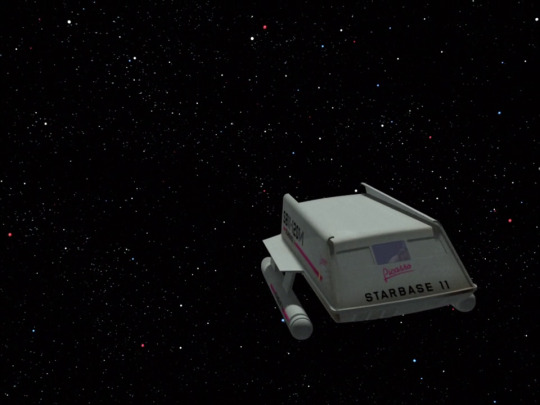
Similarly, the Starbase Four shuttle stolen by Lokai in Let That Be Your Last Battlefield, was remastered as the Da Vinci SB4-0314/2.
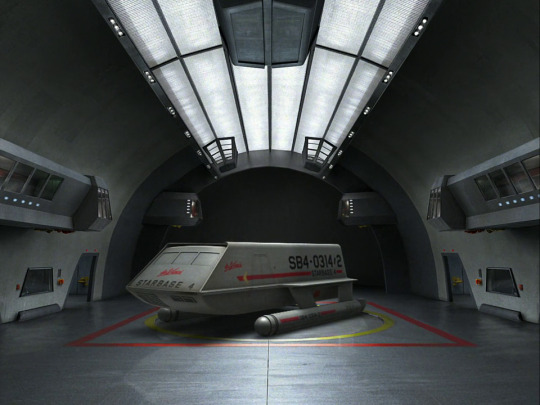
USS Constellation NCC-1017

The registry number is visible in the original. Commodore Decker's crippled ship, in The Doomsday Machine.
USS Defiant

The ship trapped in the inter-dimensional space of The Tholian Web. The registry (NCC-1764) is only visible in the remastered version.
USS Exeter
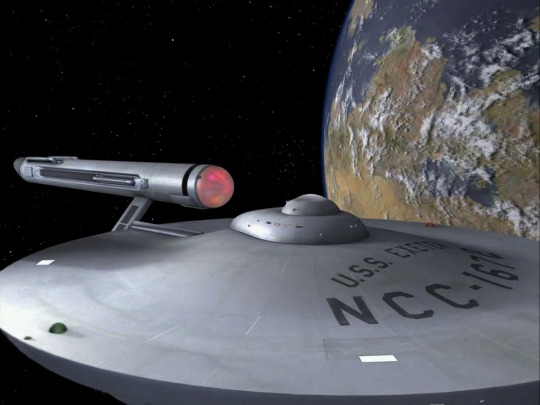
Captain Ronald Tracey's ship in The Omega Glory. The registry was only included in the remastered version: NCC-1672.
USS Intrepid

The all-Vulcan ship destroyed by the space amoeba in The Immunity Syndrome. It was never seen on-screen until the remastered version, which inserted it orbiting the starbase of Court Martial (apparently with the registry NCC-1631, though I couldn't tell by my screenshots).
USS Lexington, USS Excalibur, USS Hood and USS Potemkin



The four starships participating in war games against the M-5 in The Ultimate Computer. The Lexington is commanded by Commodore Bob Wesley, and it's the only one where I could see the registry along the name in the remaster: NCC-1709. The Excalibur was commanded by Captain Harris and (supposedly) has the number NCC-1664. Its whole crew was killed in the battle against the M-5. The Hood would be the NCC-1703 (the number can be seen in the third picture). And the Potemkin, the NCC-1657. Though all of this comes from production info about the remaster, and it's not really visible.
USS Farragut
The ship, commanded by Captain Garrovick, where Kirk served as a Lieutenant, eleven years before Obsession. The crew was attacked by the cloud creature from the episode, with many casualties. This ship is never seen in the series.
USS Yorktown
A ship scheduled to rendezvous with the Enterprise, in Obsession. Never seen. There's also a Yorktown attacked by the probe in The Voyage Home. Possibly the same ship?
USS Republic NCC-1371
Kirk mentions the whole name in Court Martial. It's the ship where he served as an Ensign and reported Ben Finney for negligency.
USS Valiant
A ship destroyed while visiting Eminiar Seven, fifty years before A Taste of Armageddon
Other ships seen in a chart from "Court Martial"

Some of these registries were applied to already discussed ships (mostly in the remaster). The new ones would be: NCC-1697, NCC-1718, NCC-1685 and NCC-1700.
So, which are those twelve ships like the Enterprise that Kirk mentioned? In TOS we only see eight ships that definitely look like it (nine if we count the Intrepid from the remaster). Those would be: Enterprise, Constellation, Defiant, Exeter, Intrepid, Lexington, Excalibur, Hood and Potemkin. To further complicate matters, there's a production memo from 1967 (by Justman and Fontana) that lists the Starship Class vessels thus: Enterprise, Constellation, Exeter, Intrepid, Lexington, Excalibur, Hood, Potemkin, Yorktown, Farragut, Republic, Valiant, Constitution and Kongo. Add to the list the Defiant (not yet created) and that's a total of 15 ships! The Valiant was certainly destroyed by this time. Maybe the Farragut and the Republic (Kirk's earlier ships) had been decomissioned too?
USS Carolina
A ship near Capella IV, which supposedly sends a distress call in Friday's Child. Never seen.
SS Dierdre
A freighter attacked by Klingons, also from the previous episode. The distress call was actually fake, but the ship should exist.
SS Columbia
Eighteen years before The Cage, this old ship crashed on Talos IV. Vina was the only survivor.
SS Beagle
A ship commanded by Captain Merik, which was destroyed near the fourth planet of System 892 (six years before Bread and Circuses). It's described as a "small Class 4 stardrive vessel".
Horizon
A ship lost near Sigma Iotia, a hundred years before A Piece of the Action. It's said that the Horizon was of the same "outfit" as the Enterprise. Considering its age, this might mean that it was from the Federation, rather than being of the same class.
Antares
The ship where Charlie Evans was travelling, before being transferred to the Enterprise (Charlie X). Commanded by Captain Ramart. It was never seen in the original, but the remaster introduced a model based on a TAS ship, along with the number NCC-501.

Woden
The automated ore freighter that the M-5 destroys in The Ultimate Computer. In the original, it just looked like Khan's "Botany Bay". But the remaster replaced it with a model very similar to the Antares. Behind-the-scenes info tells us that this new Woden had the NCC-325 number, but that's not seen on-screen.


Archon
A ship that disappeared around Beta Three, a hundred years before The Return of the Archons. Its crew became known by the locals as the legendary Archons.
Aurora
A space cruiser stolen by the "hippies" from The Way to Eden. In the original, it looked similar to a Tholian ship. The remaster introduced a new model, apparently with the registry NC-17740 (not really legible).

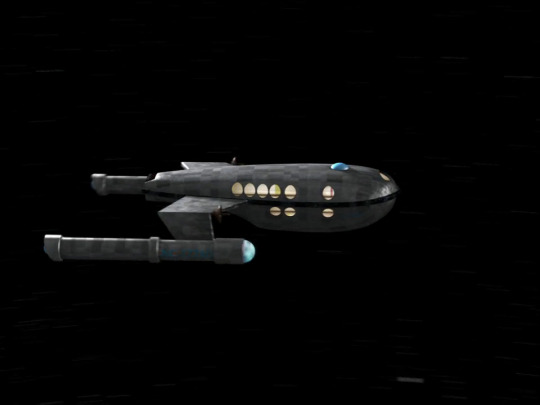
Class J ships
The small cargo ship, piloted by Mudd without a license in Mudd's Women, is said to belong to this class. There's also a cadet vessel, an old Class J starship, mentioned in The Menagerie. Part I. Mudd's ship was merely a blob of light in the original. The remaster introduced a model similar to the new Aurora.

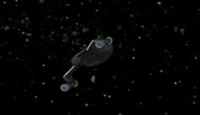
Astral Queen
The ship, commanded by Captain Jon Daily, that was scheduled to pick up the Karidian Company of Players, in The Conscience of the King.
SS Botany Bay
An old DY-100 model from the 1990's, that transports Khan and his followers in hybernation. It's said to be even older than the DY-500 class.

SS Valiant
Not to be confused with the USS Valiant above. This far older ship encountered a magnetic storm that threw it to the galactic barrier, 200 years before Where No Man Has Gone Before. This ship would be about as old as the Botany Bay, and it seems it only had impulse engines.
17 notes
·
View notes
Note
Not only are wizard towers based, but the more fucked up and stupid they are the more based they become. An imposing, free standing tower is cool in its own right, but a true sorcerer will make his home at the top of a veritable Tower of Babel. Scraping the the heavens with sheer height, each new floor exhibiting a new age of architecture lost to history or otherwise totally alien, and guarded by occult horrors no god would let mar the face of the earth had they any sway in the dealings of magicians.
If you can cast magic you have a moral obligation to the rest of the world to create some sort of fucked up dungeon and live in it.
At the base level of the concept--something I think that's been lost in translation both with modern technology and the fact that the trope has been parodied even more relentlessly than most fantasy tropes by writers that think they're clever--is the fact that an enormous, freestanding spire was pretty much impossible to build with the technology of any time period that predates rebar. A three-hundred-foot-tall, narrow tower on top of a difficult-to-access mountain isn't a freudian thing (refer again to writers who think they're being very clever and funny and original) it's an open declaration to any who would cross the magician that he's above the inviolable natural laws and necessities that the mightiest king is subject to.
Then you build onto that with what you mentioned, how a classic wizard (preferably DoomDeathEvilEsque, but even more benevolent ones) didn't just get magic power by attending Pigacne Magical Finishing School (which I still assert is the lamest possible method of magical empowering no matter how much everyone and their mom wants to ape the concept), they would make pacts with devils and forgotten antlered gods, set up their strongholds at convergence points of unseen magical currents, bend the minds of spirits, beasts, and men to their wills, secure the forgotten refuse of the age when gods walked the earth, drank the blood of halfmortals, and every other possible way under the sun of accruing more knowledge and might. A good wizard tower should absolutely reflect that journey, showing glimpses of the various lores they've mastered and forces they've bent to their wills.
Being pointlessly hostile to any visitors and full of all the weird, fucked-up horrors the wizard has created or enthralled just goes without saying, because as we've stablished before, it is a wizard's duty to use his arcane puissance to be horrible, petty dickhead and make the world a worse place for little reason other than convenience and that it's funny
5 notes
·
View notes
Text
Whenever someone’s like Journey to Babel made it clear that McCoy doesn’t have much medical knowledge about Vulcans I’m like ??? like idk but this episode always seemed to me to confirm that McCoy knows a lot, he just lacks experience because 1. there’s only Spock around 2. there don’t seem to be many Vulcans he could encounter during his life especially if a. he was on Earth b. was jumping from planet to planet
I’m gonna be honest, I wrote this out of spite some time ago lol (idk why, it was probably something I read outside of tumblr) but now it got almost buried in my drafts, so I’m posting it for archival purposes, so I can refer to it whenever I want to.
Also, just fyi, this is my own reading of the episode. I’m not trying to change anyone’s mind.
MCCOY: It's difficult to say with Vulcan physiology, but I believe it's something to do with his cardiovascular system.
He immediately recognizes the problem, but the Vulcan physiology makes it difficult to be sure. Which is confirmed in this
MCCOY: As far as I can tell from instrument readings, our prime suspect has a malfunction in one of the heart valve. It's similar to a heart attack in a human. But with Vulcan physiology, it's impossible to tell without an operation. Mrs. Sarek, has he had any previous attacks?
The instruments can’t actually read properly. They don’t give him the full picture because the Vulcan physiology makes it difficult. It’s not that McCoy isn’t familiar with Vulcan physiology (he already said he had an interest in it before), it’s that the instruments aren’t able to read Vulcans properly, and that’s why McCoy can’t be sure. Either because the instruments weren’t built that way, or because the Vulcan physiology itself makes it difficult.
Rather than being like haha McCoy is useless, why don’t you focus on the fact that the medical tricorder isn’t able to give proper readings for Vulcans? And that’s hardly McCoy’s fault.
SPOCK: Doctor, do you propose surgery for the heart defect? MCCOY: I'm not sure. It's tough enough on a human. On a Vulcan, an ordinary operation's out of the question. KIRK: Why? SAREK: Because of the construction of the Vulcan heart. SPOCK: I suggest that a cryogenic open-heart procedure would be the logical approach. SAREK: Yes, unquestionably. KIRK: Bones, what about it? MCCOY: Well, I'm glad somebody's asking me something around here. Well, the procedure they're discussing would require tremendous amounts of blood for the patient.
Spock asks McCoy for his professional opinion. You know, Spock who’s always like your vicious potions asks McCoy for his professional opinion, because he trusts it.
And again, McCoy knows what kind of surgery would be needed for a Vulcan. This doesn’t read to me as someone who doesn’t know much about Vulcans.
And just because Sarek and Spock are the ones explaining it, doesn’t mean McCoy doesn’t know all of that. Because he does. It’s just, you know, giving lines to other characters lol (not to mention Vulcans just... like to explain things) But also McCoy looks a bit put off that Sarek and Spock just... explain things he knows and that are his area of expertise.
So I mean all of the above made it clear that McCoy knows how Vulcan heart functions because he has enough theoretical knowledge.
CHAPEL: I've checked the blood bank. There isn't enough Vulcan blood and plasma to even begin such an operation of this type.
People also often wonder why they wouldn’t have enough blood for Spock. But it’s not that there isn’t a normal amount of blood for when Spock would need a transfusion, it’s just that the operation requires a really huge amount, and they don’t have enough for this specific operation.
SAREK: My blood type is T-negative. Somewhat rare, even for a Vulcan. MCCOY: Yes, I'd say that's rare. SPOCK: My blood is T-negative, Doctor. CHAPEL: We've run a number of blood tests on Mister Spock. It isn't true Vulcan blood either. It has human blood elements in it. SPOCK: It should be possible to filter out the human factors. MCCOY: Even you couldn't give that much blood, Spock. It would kill you. KIRK: Bones. MCCOY: Mrs. Sarek, you must understand the chances are extremely small to find a way to produce sufficient T-negative blood.
McCoy is familiar with Vulcan blood types. (Spock is just like “Doctor, I’m also T-, I’m right here, I can save my father.” He’s basically just reminding him of the fact, it doesn’t mean McCoy doesn’t know Spock’s blood type, especially since Chapel says they’ve run a number of blood tests on Spock, and the medical department is aware that Spock’s blood has human elements in it)
And again it’s implied that the amount of blood needed would kill Spock if he were to give it.
MCCOY: Spock, we would need such great amounts of blood that, even if the drug worked on the Vulcans as well as a Rigelian, which I'm doubtful, it would still drain Sarek to a critical level. SPOCK: I consider the safety factor low, but acceptable. MCCOY: Plus the fact I've never operated on a Vulcan before. Oh, I've studied the anatomical types. I know where all the organs are. But that's a lot different from actual surgical experience. So if I don't kill him with the operation, the drug probably will.
Spock is willing to let McCoy operate on his father. He doesn’t trust just his medical professional opinion, he trusts his skills as well.
But of course McCoy is hesitant. He doesn’t have the experience. He has the knowledge but no experience, no other surgeon around that could step in. idk but it seems realistic to be hesitant about a difficult operation.
MCCOY: It could damage you internally. It could kill you. I'm sorry, Spock. I can't sanction it. AMANDA: And I refuse to permit it. I won't risk both of you. SPOCK: Then you automatically condemn Sarek to death. And you, Doctor, have no logical alternative either. If you do not operate, Sarek will die. You now have the means to perform the operation. I am volunteering myself as the blood donor. I'll be at my station until you require me.
Again, Spock is willing to put his life and the life of his father into McCoy’s hands. He trusts McCoy with his skills. (or maybe he’s just willing to die for Sarek)
McCoy doesn’t say he won’t operate because he’s incompetent (or unsure). He doesn’t want to put Spock at risk.
But Spock comes at him with logic - if you don’t operate, Sarek will die (and that’s something a doctor shouldn’t allow). Spock chose his words carefully because he knows what’s important to McCoy and that’s the lives of others.
MCCOY: Spock, your father is much worse. There's no longer a choice. I have to operate immediately. We can begin as soon as you're prepared.
KIRK: How's Sarek? MCCOY: Not good. If I could only operate. KIRK: What's stopping you? I thought you were all ready
And of course the moment Sarek’s condition worsens, McCoy is all ready to proceed. Because it’s his duty to save lives.
And just to be complete, there’s also this:
CHAPEL: Mister Spock's blood reproduction rate is up over two hundred percent. Sarek's heartbeat has risen to three hundred and twenty four. Blood pressure ninety over forty, dropping. MCCOY: I wish I knew whether that was good or bad.
OK, so here he says he doesn’t know if the high heartbeat or low blood pressure is good or bad. And... I mean he doesn’t know how Vulcan heartbeat and blood pressure behave during a cardiac surgery because he has no experience with it (and tbh probably very little of Starfleet doctors would have an experience with it). I can’t consider this line as “McCoy doesn’t know much about Vulcan physiology” because it is specific to this heart operation. And it was already established that McCoy doesn’t have a surgical experience when it comes to Vulcans.
In any case, McCoy succeeded, and it wasn’t just luck. He knew what he was doing, and he is very familiar with Vulcan physiology.
So I just can’t agree with anyone saying that McCoy is ignorant about Vulcan physiology (not just in Journey to Babel, but overall) or doesn’t know enough when it’s obviously not true.
#tos nonsense#Leonard McCoy#additional explanation: when you read comments outside of tumblr (but sometimes even on tumblr) there's a lot of anti-mccoy rhetoric#and his medical skills are usually questioned and i wrote this when the last straw snapped#and then i just let it be but it wasn't a bad post so i posted it lol#star trek tos
62 notes
·
View notes